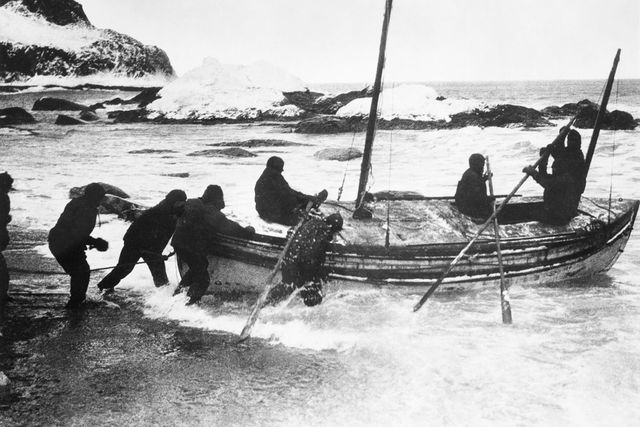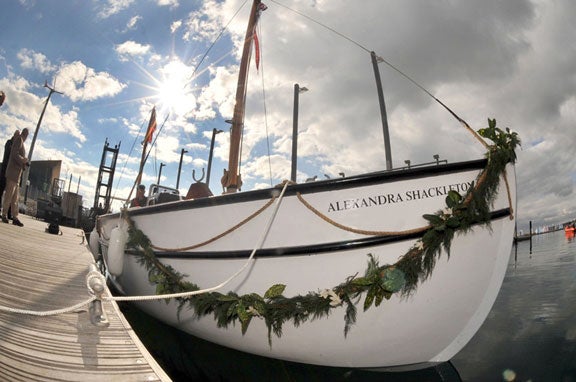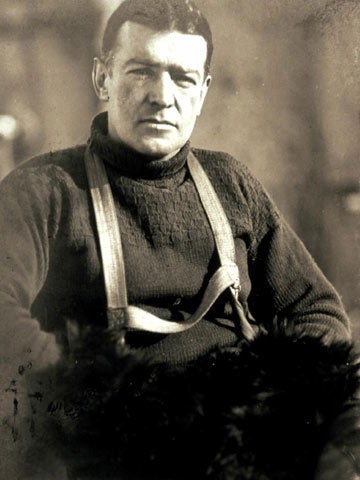
In 1916, after losing his boat on an expedition to Antarctica, Ernest Shackleton and five crew members hopped in a row boat named the James Caird and set off on an 800-mile journey from , Antarctica, to . He left behind 22 crew members in his last ditch effort at survival. Shackleton and co. spent 17 days at sea in the 23-foot wooden boat before landing on South Georgia. Then, Shackleton and two men crossed miles of mountainous terrain to get to a whaling station. After arriving and getting a boat, he returned to Elephant Island on his fourth attempt and rescued the rest of his crew. “It is perhaps the greatest survival journey of all,” says Tim Jarvis.
is a 46-year-old Australian/Briton who hopes to recreate Shackleton's double using only period gear. He's created a replica boat, gathered replica clothing, and assembled a core of salty cohorts. The only modern equipment he'll bring will be emergency rescue gear. Here's the kicker: He's still looking for few more good men and women to join him—via . This actually isn't so far off from what some believe Shackleton —he allegedly used newspaper classifieds. If you want to join, read on for details of the journey and what Jarvis wants in a crewmate.

On the Origins of the Expedition:
I’ve always been fascinated by Shackleton’s incredible journey of survival, but if there was one moment, it would have been when I completed a recreation of the survival journey of Sir Douglas Mawson back in 2006/07. Mawson undertook an incredible solo man-haul journey on starvation rations after both of his co-expeditioners died back in 1913. I re-enacted this using only period gear, clothing and food, right down to consuming the same starvation rations as Mawson to see if it could be completed without resorting to cannibalism, as he has been accused of.
On Why:
After I successfully completed the Mawson journey, I had to attempt Shackleton’s journey as I had promised his granddaughter, , that I would. I wanted to honor Shackleton’s achievement by journeying in a replica boat, and using the same gear and equipment. More broadly, I want to get across Shackleton's courage, endurance and leadership to a new generation of people. Whether it is climate change or the state of disarray in the credit markets, Shackleton’s message of individuals putting differences aside and working to their strengths to collectively overcome seemingly insurmountable problems is incredibly timely. I also want to use the expedition to highlight the environmental change that’s happening in the region through which we’ll travel. It seems ironic that whereas Shackleton’s goal was to save his men from Antarctica, we are trying to save Antarctic from man—an unfortunate irony.

On Obstacles:
The toughest part will relate to negotiating the Southern Ocean in a boat that is not remotely designed for such conditions. It is, after all, the roughest sea in the world. The main risks are drowning at sea in the event that the boat sinks or capsizes and we are not able to be right it. In the latter situation, although it is problematic for the four men stuck below deck in an upturned boat, the far more serious risk is faced by the two men on deck who will be faced with sea temperatures between 28 and 45 or so degrees Fahrenheit. They will have perhaps 15 minutes of survival time, and will have to avoid being swept away from the boat altogether. The key consideration for us below deck therefore is to help the two men above deck in the event of capsize.
The second main risk relates to being dashed against rocks on our approach to King Haakon Bay of South Georgia. This is an extremely rough landing and we will have to ensure we get it right. Once the small sail is down, we will only have rowing power at our disposal.
The third main risk relates to a fall whilst undertaking the mountaineering section of the journey—crossing South Georgia. This might take the form of a fall in a crevasse or the impact from a rock fall. The glaciers may well be more crevassed than they were in Shackleton’s day as a result of climate change.
On the Most Enjoyable Part:
Finishing. No, seriously. Making a safe landfall on South Georgia will be the most enjoyable part, followed very closely by reaching the old whaling station at Stromness on the northern coast of South Georgia, which will signify the end of the journey. We hope to knock on the door of the station managers hut as Shackleton did 100 years before, although we don’t expect to be greeted by anyone given that the base was abandoned around 50 years ago. Other than that, it will be the camaraderie with the other guys in the crew and the adventure of getting through such an ordeal. That is what keeps me going back to do these things.

On When:
The team will depart in early January 2013 and hope to be able to hold a memorial service at Sir Ernest Shackleton’s grave at Grytviken on South Georgia by February 15—so a total of around six weeks.
On Applying to Join Jarvis:
Yes, we’re looking for two types of crew. Firstly, we are interested in a top notch U.S. sailor to come on board our replica of the James Caird, the Alexandra Shackleton, and a second sailor/cameraman who can both film on board and work as a functioning crew member/sailor. Applicants should write to me via my website, .
The other type of crew we’re looking for are people to join the expedition support vessel. More information on this to follow soon, but best to keep a regular eye on for updates.
H/T:
—Joe Spring